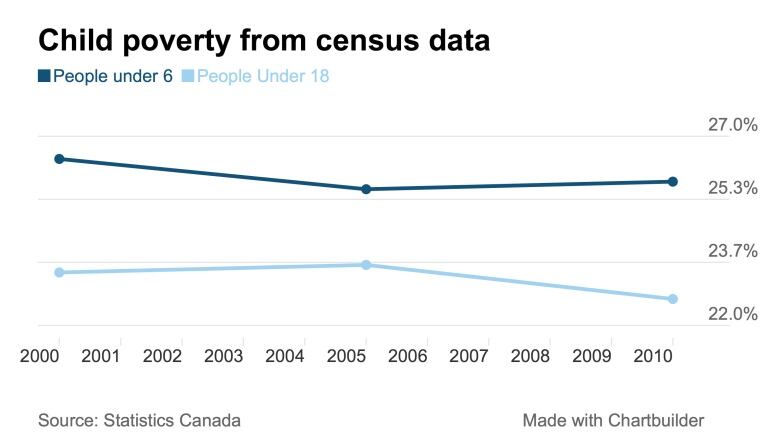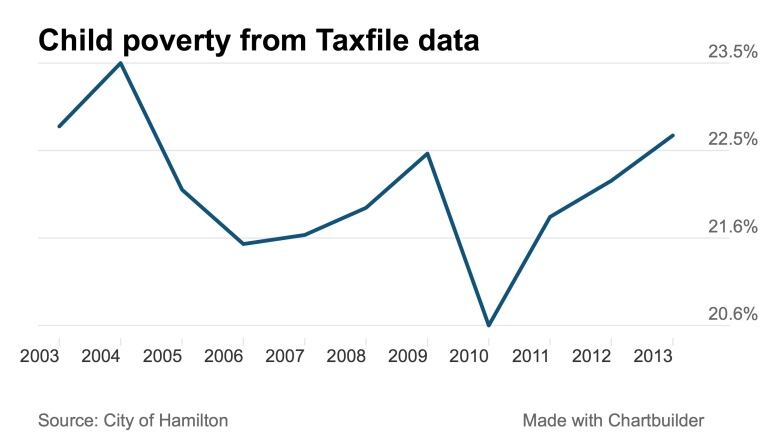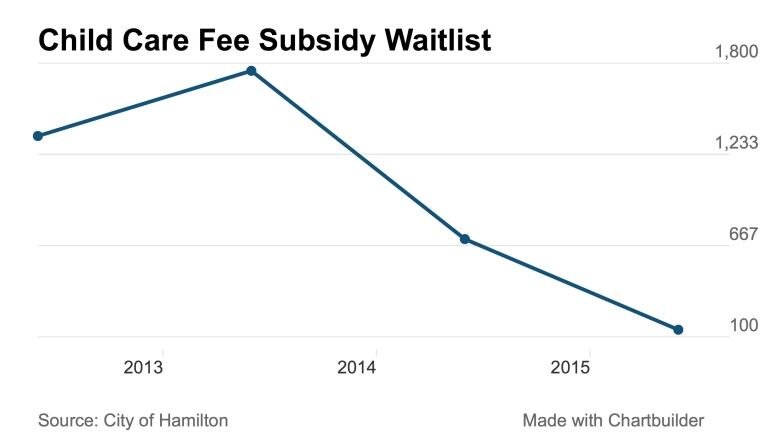Hamilton: Not the best place to raise a child
1st in a 3-part series that examines the city's effort to improve child well-being

Despite the slogan,Hamilton is not the best place to raise a child.
It has been almost 10 years since theHamilton Poverty Roundtable set thegoalofmakingthe city the best place to raise a child and Hamilton adopted itin its strategic plan.
Yet statistics show little concrete progress towards achieving that goal. Kids are still going hungry, income inequality is vast, and almost one in every four Hamilton children are still living in poverty.
The facts are stark:
- Child poverty levels remain consistently high, as do vulnerability levels.
- The number of families with a new babyconsidered to be at risk for developmental challenges is rising.
- The need for school nutrition programs has grown, but local funding hasn't grown along with it.
- Hamilton's public school system consistently lags behind the province, with graduation rates and local EQAO scores are below the Ontario average.
One statistical bright spot is wait lists for subsidized childcare have plummeted in recent years.But critics say parents still have trouble accessing affordable childcareand that what's available isn't evenly distributed.
And now, after over $1.3 million in contributions since 2005, the province is cuttingfundingto Hamilton Best Start network, leaving the child-focused program with fewer dollars after 2016.
- READ MORE: What is holding Hamilton's anti-child poverty plan back?
- RELATED: This is the childcare election, advocates say
But do statistics tell the whole story? Both the city and Best Start point to a numberof worthwhile initiatives created in the last decade to improve child well-being in the city, and say Hamilton is a more child-friendly place than it was 10 years ago. So why isn't that showing up in the numbers?
As part of a three-part series, CBC Hamilton will examine the statistics behind Hamilton's child well-being issue, talk to experts and those involvedabout what efforts are in progress, and explore what society needs to do to truly make Hamilton a better city in which to raise children.
Here's what we know, by the numbers.
Child and youth poverty
From 2000 to 2010, poverty rates hovered around 26 per cent in Hamilton for kids under six, and around 23 per cent for people under 18.

Since the long form Census was scrapped, the city now has to use the low-income measure for people under the age of 18 from Taxfile Canada, which isn't as precise. That number bounces around a little more, but is still in a similar range.

In 2000, 23.3 per cent of people under 18 in Hamilton lived in poverty. That number dipped to 20.6 per cent in 2010, but rose back to 22.7 per cent in 2013.
Hamilton isn't beating child poverty. There are almost as many people under 18 in the city who are poor as there were over a decade ago.
Child vulnerability
The city measures "child vulnerability" through the Early Development Instrument (EDI), a tool that measures a range social, mental and emotional factors to rateoverallschool readiness in kindergarten students and highlights how many children are lagging behind.
That vulnerability rate has hovered around 26 per cent since 2005 which is above the provincial average.

The city and Hamilton Best Start says reducing that vulnerability level would be a success and that hasn't happened.
Graduation rates
Graduation rates from Hamilton's public school system are below the provincial average, though officials say they have been improving. The Catholic board meets the provincial standard.

Developmental challenge risk in families with newborns
The number of families with a new baby considered at risk for developmental challenges has spiked sharply in recent years, which the city attributes to a more accurate screening tool. This measure evaluatesthe infant's health, as well as other family and healthfactors, includingthe mothers' age and if she smoked during pregnancy.

The city attributes this rise in numbers to the new, "more sensitive" screening tool that was brought in in 2013. The city says this new measure is less likely to miss a family/child who could be at risk for not reaching their optimal development. It also includes a second level of assessment that the old tool did not.
In essence, the new tool now provides a more complete picture of this potential risk, and is measured at a higher level than in previous years.
School nutrition programs
The Tastebuds student nutrition collaborative has been growing steadily in recent years, but so has the need for its programs.
| 2009-2010 | 2010-2011 | 2011-2012 | 2012-2013 | 2013-2014 | 2014-2015 | |
| Student nutrition programs | 100 | 124 | 139 | 148 | 162 | 168 |
| Students served | 23,708 | 22,309 | 22,930 | 25,056 | 27,550 | 30,082 |
The province funds 15 per cent of Tastebuds' programs, while the rest is fundraised by the organization itself. Unlike Toronto, the city doesn't fund the program at all though organizers have been pushing for it to be included in the city budget for four years.
Childcare
The city's licensed childcare capacity has grown by over 4,000 spaces since 2011, but the number of families and children served by subsidies hasn't grown to match.
| 2011 | 2012 | 2013 | 2014 | 2015 (up to July) | |
| Licensed Child Care Capacity | 10,101 | 10,713 | 11,375 | 13,517 | 14,756 |
| Number of Children Served | 6,261 | 6,062 | 5,976 | 6,360 | 5,234 |
| Number of Families Served | 4,922 | 4,630 | 4,559 | 4,697 | 3,851 |
Longtime school board trustee Judith Bishop maintains that childcare spaces are not evenly distributed, with rural and inner city areas under-served. The 2013 Ontario Municipal Benchmarking Initiative shows licensed child care spaces in Hamilton were below the Ontario median, with only Waterloo and Windsor having lower percentages.
Hamilton does, however, have the second highest percentage of subsidized childcare in the province after Toronto at 23 per cent but that number has dropped from 27 per cent in 2012, the largest such drop in the province.
Waitlists for childcare subsidies have shrunk considerably, dropping from 1,347 in 2012 to just 144 in June something the city says is a great success, attributing it to increased provincial funding and the implementation of all day kindergarten.

EQAO testing results
Almost totally across the board, the Hamilton-Wentworth District School Board lags behind the provincial averages for EQAO testing.
There have been improvements largely in reading and writing but test scores in math have been getting worse.
In most cases, the Catholic board is either at the provincial standard, or just slightly above or below it.
Scroll through this gallery to see how Hamilton stacks up on EQAO scores.
Part one, Tuesday: The bleak statistics around child well-being in Hamilton
Part two, Tuesday evening: Why we haven't seen more progress in the last 10 years
Part three, Wednesday: What society needs to do to truly make Hamilton the best place to raise a child
Clarifications
- A clarification has been added to this story under the "Developmental challenge risk in families with newborns" header that explains the implementation of a new screening tool. The city says this new tool accounts for the rise in numbers, and provides a clearer picture of the situation in Hamilton.Oct 15, 2015 3:31 PM ET












_(720p).jpg)


 OFFICIAL HD MUSIC VIDEO.jpg)
.jpg)



























































































